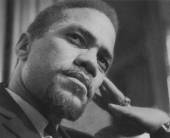The evidence points to a confluence of three groups involved in Malcolm X’s assassination: institutional forces (NYPD, FBI, CIA, etc.), The Nation of Islam, and elements within Malcolm’s own circle after his split with NOI. There is definitely overlap between these groups, as evidence suggests that elements of one group could have been working as agents of another.
Evidence
Gene Roberts, one of Malcolm’s chiefs of security, was an NYPD undercover cop. Roberts was an agent with NYPD’s Bureau of Special Services (BOSS), a super-secret political intelligence unit nicknamed the “Red Squad.” Roberts was on the scene as Malcolm was assassinated and supposedly tried to resuscitate him after he’d been shot. Roberts later went on to infiltrate and disrupt the Black Panther Party. 3 2
Two of the three men convicted of killing Malcolm X, Norman Butler and Robert 15X Johnson, were almost certainly NOT at the scene of the crime. 2
“At one point during the trial, one of the hit men, Talmadge Hayer, claimed that he was promised several thousand dollars for the murder by a non-Muslim.” 1
Whenever Malcolm spoke in New York, the NYPD would have at least several officers on the scene. On the day of his assassination, the police presence was mysteriously called off and moved across the street. There were only two cops in the building at the moment he was killed and they were as far as possible from the ballroom where he was speaking.
“J. Edgar Hoover wrote an infamous memo called the Black Messiah Memo. He said, ‘We must stop the rise of a black messiah.’” 3
